
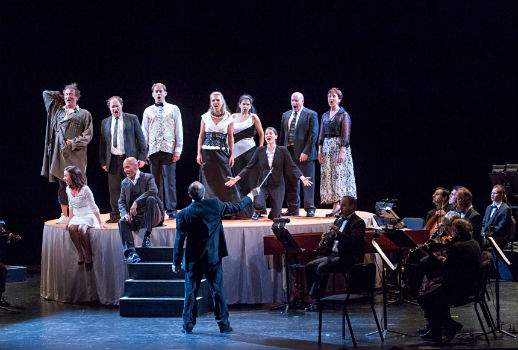
Despite being billed as a “staged concert version”—presumably because the orchestra was on stage and there was no scenery, it was by any standard a full production of the work. A large raised round platform on which most of the action took place was supplemented by two smaller square platforms more forward and to the right and left which led to two free-standing doors. The violins were at the edge of the stage—the firsts to the left, the seconds to the right next to whom Fischer sat conducting although he would arise occasionally, once or twice to participate in the action. The remainder of the orchestra was divided into two sections on sides of the larger platform: the oboes, flutes and cellos on the left, the clarinets, horns, basses and the dreary continuo team to the right.
Since much of the opera involves dressing and (occasionally only attempted) undressing, the lively overture found eight actors and eight chorus members scurrying about carrying 18th century costumes. Most of these were hung upon two wardrobe racks at the back of the large platform while the actors struggled into the remaining period costumes—odd since the principals were in modern dress. Several dressed mannequins hanging on wires from above the stage floated amidst the action and were occasionally lowered to play a part in it—Figaro sang his “Se vuol ballare” to the decapitated head of one, and he dressed Cherubino in the red jacket and plumed hat from another during “Non più andrai.” When exchanging identities for the final masquerade, the Countess and Susanna simply stood behind two elaborate dresses (and wigs) hanging from wires.
One of the show’s strongest features was the subtle direction of the cast—people behaved naturalistically with few of the buffa exaggerations that often mar productions of Nozze. Susanna and Figaro convinced as a young couple in love while the frosty marriage of the Count and Countess was strikingly evoked. However, not for the first time, I wished that the surtitles had malfunctioned. On stage a believable human drama unfolded while the titles prompted the laugh-happy audience to hysterically guffaw at any opportunity. Is the discovery of Cherubino by the Count in the first act truly knee-slappingly hilarious? Fischer’s touching revelation of Figaro’s parentage didn’t deserve such inane cackles.
One problem with any modern-dress production of Nozze involves the class differentiation in Beaumarchais/da Ponte’s drama: if these events occur in 2013—who is Figaro to the Count? What entitles the Count to presume he has the right to bed Susanna? Unfortunately Fischer just ignored these complications and the occasional 18th century costuming was more confusing than enlightening, and the figure who kept prancing about plopping white period wigs on Fischer and orchestra members was baffling and annoying.
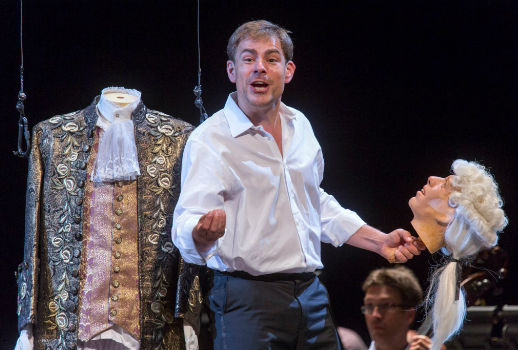
Although the cast was on the top of its game dramatically, the singing unfortunately was frustratingly uneven. German baritone Roman Trekel literally towered over the cast as a commanding, neurotic Count, but his provincial Mozart style consisted of a lot of off-pitch barking, particularly unfortunate in his ferocious, but ugly third-act aria. I could not believe this was the same baritone I heard sing such a meltingly lovely Wolfram in Wagner’s Tannhäuser at the Berlin Staatsoper in 2002. One couldn’t help but long for the sterling feature of the MET’s 2012 fiasco: Gerald Finley’s superb Almaviva.
American-born Romanian soprano Laura Tatulescu spends most of her time at Munich’s Bavarian State Opera, next season singing everything from Zerlina and Musetta to Ines in Il Trovatore and one of the Voices of the Unborn in the new Die Frau ohne Schatten. While I suspect her detailed acting and enthusiasm is appreciated in that house’s ensemble, her Susanna yesterday revealed a vocal presence that was nothing special. Her rough, occasionally wiry singing grew increasingly hard-pressed as high notes often flew wildly off the mark. By contrast, Norma Nahoun, the sparkling Barbarina, had bags of charisma and a more settled, pleasing voice.
Fortunately the spouses proved more appealing with Hanno Müller-Brachmann, more a good-natured than a dangerously-rebellious Figaro, revealing a nicely grainy bass. Once a well-regarded Susanna, Swedish soprano Miah Persson has been slowly moving onto the grander Mozart heroines. Her Countess, much like her 2010 Met Fiordiligi, demonstrated that this transition is not without risks. After an unsettled “Porgi amor” Persson proved a young and feisty Rosina, far from the nobly suffering persona some sopranos adopt. Her “Dove sono” was lovely but lacked the thrilling climax that convinces the audience that she will succeed. Unfortunately her clear, cool soprano blended poorly with Tatulescu’s more acid tone in the Letter Duet.
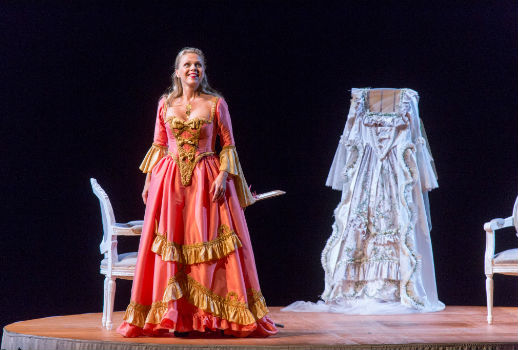
Her Bartolo, Andrew Shore, who had been such a fine Don Alfonso in Mostly Mozart’s 2004 Così Fan Tutte, has apparently experienced a precipitous decline in the meantime: his “La vendetta” was ugly, empty bluster. More happily, French tenor Rodolphe Briand made a fine US debut as both a wittily sung Don Basilio (too bad his aria was cut) and an unctuous Don Curzio.
Despite some real vocal weaknesses, this intimate and detailed Nozze often brought out the wit and humanity of Mozart’s masterpiece. As its three performances this summer quickly sold out and yesterday’s elicited the inevitable standing ovation, I suspect that we will be seeing a Così by Fischer and the BFO sometime soon. I can only hope that its six principals will be more carefully chosen as much for their vocal skill as for their dramatic talents.
Photos: Richard Termine New f














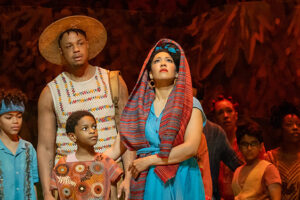


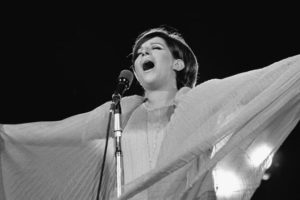





Comments